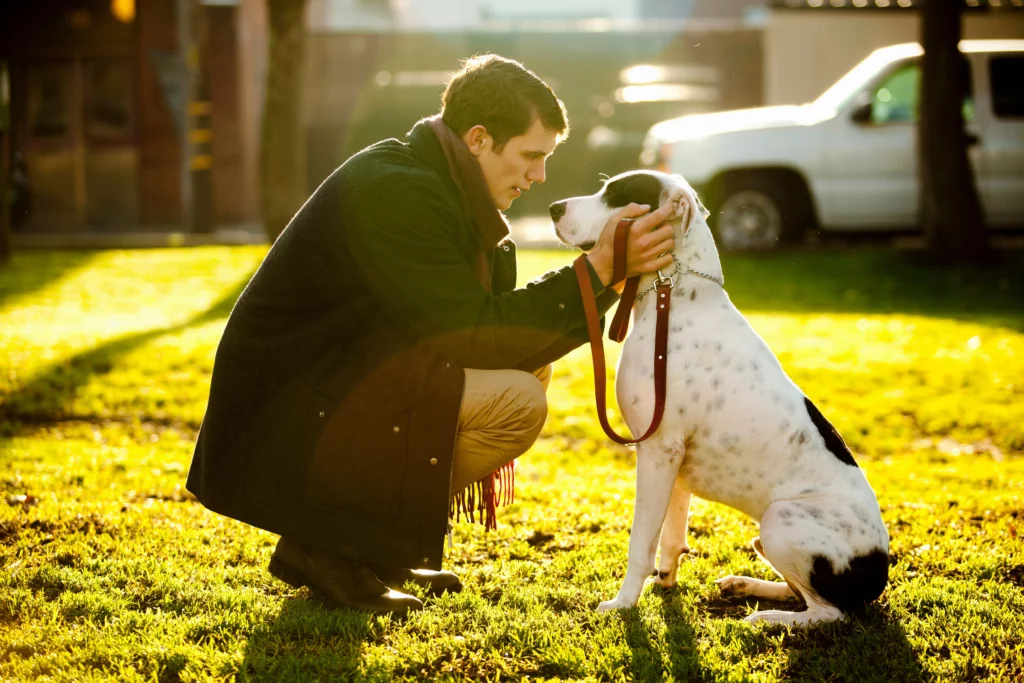Introduction
Dogs are known for their incredible ability to sense and respond to their human companions’ emotions. Many dog owners have observed their furry friends displaying empathy and understanding, especially during times of stress. In this comprehensive guide, we explore the fascinating topic of whether dogs can sense your stress. We delve into the scientific research, examine the signs of stress in dogs, and provide tips for managing both your stress and your dog’s well-being.
Understanding Canine Empathy
The Science Behind It
Scientific studies have shown that dogs have a remarkable ability to sense human emotions, including stress. Research has revealed that dogs can read human facial expressions, vocal tones, and body language, allowing them to gauge their owners’ emotional states. Furthermore, studies using physiological measures, such as heart rate variability, have demonstrated that dogs’ stress levels can synchronize with their owners’ stress responses.
Oxytocin and Bonding
Oxytocin, often referred to as the “love hormone,” plays a crucial role in human-dog bonding. When humans interact with dogs, oxytocin levels rise in both species, leading to increased feelings of attachment and empathy. This hormonal connection may explain why dogs are so adept at sensing and responding to their owners’ stress.
Signs Your Dog Can Sense Your Stress
Heightened Attention
When you’re stressed, you may notice that your dog becomes more alert and attentive to your behavior. They may closely watch your movements, maintain constant eye contact, or position themselves near you. This heightened attention is a sign that your dog is attuned to your emotional state.
Behavioral Changes
Dogs often mirror their owners’ emotions. If you’re stressed, your dog may exhibit changes in their behavior. They might become more restless, exhibit pacing or excessive barking, or display clingy behavior. Some dogs may even withdraw and become more reserved when they sense their owners’ stress.
Physical Contact and Comfort
In times of stress, dogs may seek physical contact as a way to provide comfort and support. Your dog might come closer to you, cuddle, or place their head on your lap. They may also offer gentle licks or nuzzle against you. This physical contact is an instinctual response aimed at providing emotional support.
Managing Your Stress and Supporting Your Dog
Recognize and Address Your Stress
It’s important to acknowledge and address your own stress levels. Practice self-care techniques such as exercise, meditation, deep breathing, or engaging in hobbies that bring you joy. Seek support from friends, family, or professionals if needed. By managing your stress, you create a calmer environment for both yourself and your dog.
Maintain a Consistent Routine
Dogs thrive on routine, which provides them with a sense of stability and security. Stick to a regular schedule for feeding, exercise, and playtime. This predictability helps alleviate stress in dogs and ensures they have a structured environment to rely on.
Create a Safe Space
Designate a quiet, comfortable space where your dog can retreat to when they need a break. This can be a crate, a cozy bed, or a specific area in your home. Encourage your dog to use this space and respect their need for solitude and relaxation.
Provide Mental Stimulation
Mental stimulation is vital for dogs, as it keeps their minds engaged and helps reduce stress. Incorporate interactive toys, puzzles, and training exercises into your dog’s routine. This mental stimulation not only distracts them from your stress but also provides an outlet for their energy and promotes positive behaviors.
Practice Calming Techniques
Implement calming techniques that help both you and your dog relax. Deep breathing exercises, gentle massages, or aromatherapy with soothing scents can create a calming atmosphere. Calming music or white noise machines can also be beneficial for creating a peaceful environment.
Conclusion
Dogs have a remarkable ability to sense and respond to their owners’ stress. Through their empathetic nature and heightened sensitivity, dogs can pick up on emotional cues and physiological changes associated with stress. Understanding the signs that your dog senses your stress is crucial for managing both your well-being and your dog’s. By recognizing your stress levels, implementing stress management techniques, and providing a supportive environment for your dog, you can foster a harmonious bond and create a calm and stress-free atmosphere for both of you.

